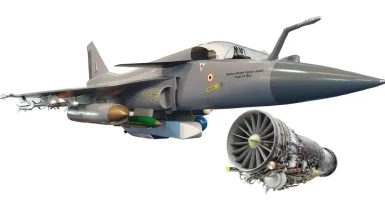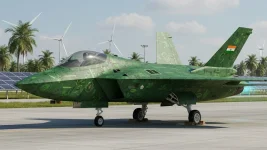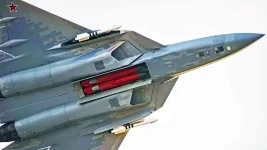- Views: 2K
- Replies: 10
In a significant advancement for India's indigenous military aviation sector, the upcoming Tejas Mk2 fighter jet is set to incorporate an advanced Artificial Intelligence (AI) framework developed for the nation's premier fifth-generation stealth fighter, the Advanced Medium Combat Aircraft (AMCA).
This integration will create a new level of operational synergy, enabling the two distinct classes of aircraft to function as a unified and formidable force.
The primary function of the AI system in the Tejas Mk2 will be to enhance the pilot's decision-making capabilities through intelligent data processing.
The system will employ sensor fusion to collate and analyse data from the aircraft's advanced AESA (Active Electronically Scanned Array) radar, its electronic warfare suite, and other onboard sensors. This will provide the pilot with a clear, comprehensive, and real-time picture of the battlefield.
In combat situations, the AI will act as a virtual co-pilot, automatically identifying and prioritising hostile threats and recommending the most effective response strategies, thereby reducing the pilot's workload and enabling quicker engagement in high-pressure environments.
While the Tejas Mk2, a 4.5-generation aircraft, will gain this crucial decision-support system, it will not receive the full suite of AI capabilities planned for the more advanced AMCA.
The AMCA is being designed with an "Electronic Pilot" feature, enabling it to perform autonomous missions, including takeoff and landing, without direct human control—a capability reserved for high-risk unmanned operations.
However, the shared AI architecture ensures that both aircraft can communicate and exchange tactical data seamlessly when operating in the same airspace. This interoperability will allow for sophisticated, mixed-formation missions, vastly improving the Indian Air Force's (IAF) operational flexibility.
This technological leap is a cornerstone of the IAF's broader modernisation strategy, aimed at building a networked and technologically superior force to meet regional security challenges.
The Tejas Mk2 is poised to become a versatile workhorse for the air force, boasting a greater payload capacity, extended range, and the ability to carry advanced weaponry like the indigenous Astra Mk2 beyond-visual-range air-to-air missile.
In tandem, the AMCA will provide a strategic advantage with its stealth characteristics and superior sensor capabilities, designed for penetrating contested airspace.
The common AI network will allow for coordinated strikes, with the Tejas Mk2 engaging forward targets while the AMCA conducts deep-strike or electronic warfare missions.
According to the Aeronautical Development Agency (ADA), the lead design agency, the first prototype of the Tejas Mk2 is scheduled to be rolled out by late 2025, with its first flight anticipated in early 2026.
Following extensive flight trials through 2027, series production by Hindustan Aeronautics Limited (HAL) is expected to commence by 2029, with the first squadron potentially being delivered to the IAF around 2030.
The integration of the AMCA's AI technology will be implemented in later production batches, post-2030, in alignment with the AMCA program's own development timeline, which targets a prototype rollout in 2026 and operational induction by 2035.
This phased approach ensures the Tejas Mk2 program remains cost-effective while leveraging the most advanced technology emerging from India's ambitious fifth-generation fighter project.





